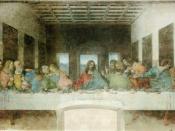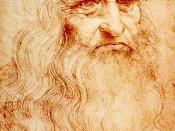The legacy of the renaissance can be described and defined in many ways and through many great people. For example, one of the main figures of the renaissance was "Leonardo Da Vinci" born in Italy during the year1452; he was during his time and is still today considered a true renaissance man. Da Vinci dabbled in almost every aspect of the arts and science. He is most famous however for his painting (Mona Lisa) finished in 1506, but he also worked on designs for weapons and sculpted as well as the study of human anatomy. Leonardo Da Vinci died on May 2nd 1519. And it is said that King Francis was at his side when he died, cradling Leonardo's head in his arms. Another great figure of the renaissance was the Architect (Andrea Palladio) born in the year 1508, Palladio was a master architect and is often described as the most influential and copied architect in the Western world.
Palladio used classical architecture to influence his style and that is what makes him a key figure of the renaissance period. Since the renaissance was based on classical ideals. By the 1540s, Palladio was using classical principles to design a series of country villas and urban palaces for the nobility of Vicenza. One of his most famous is Villa Capra, also known as the Rotunda, which was modeled after the Roman Pantheon. Palladio also designed the Basilica in Vicenza, and in the 1560s he began work on religious buildings in Venice. Palladio died in the year 1580 but left behind a legacy of architectural works and design plans in a book he published called (The Four Books of Architecture) were widely translated, and Palladio's ideas spread across Europe and into the New World. American statesman Thomas Jefferson borrowed Palladian...
![[Forum Boario, Rome, Italy] (LOC)](https://s.writework.com/uploads/17/171586/forum-boario-rome-italy-loc-thumb.jpg)


Good
this essay very good
4 out of 4 people found this comment useful.